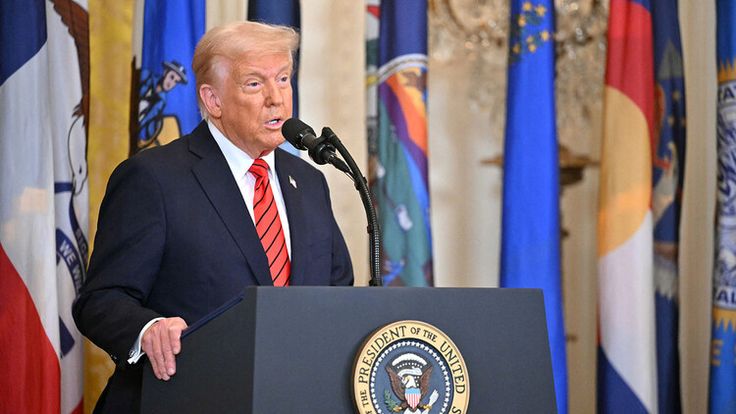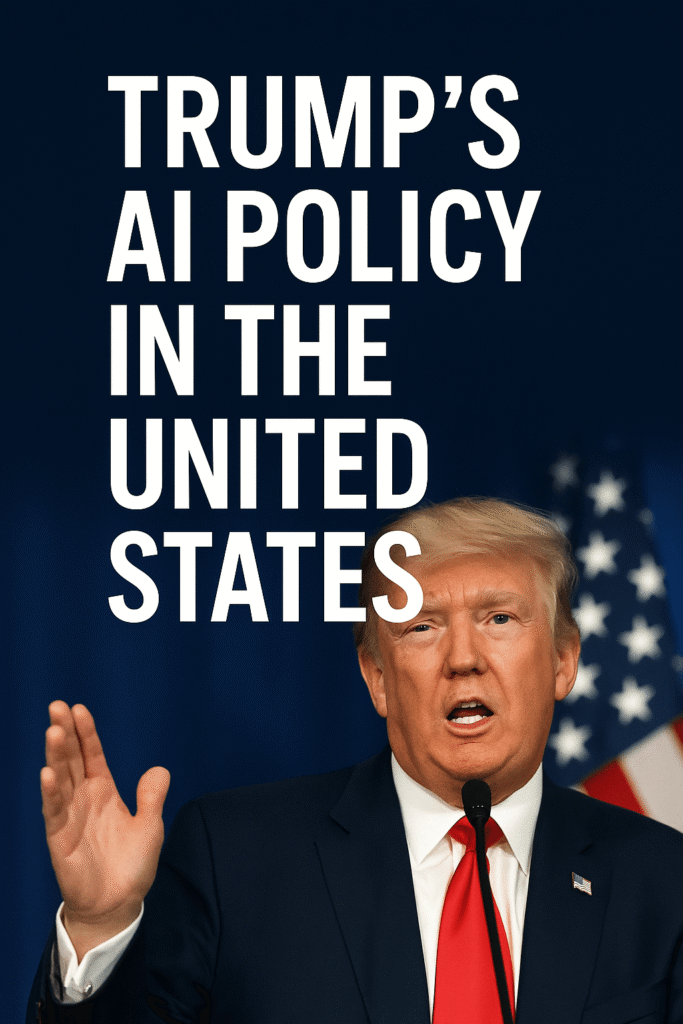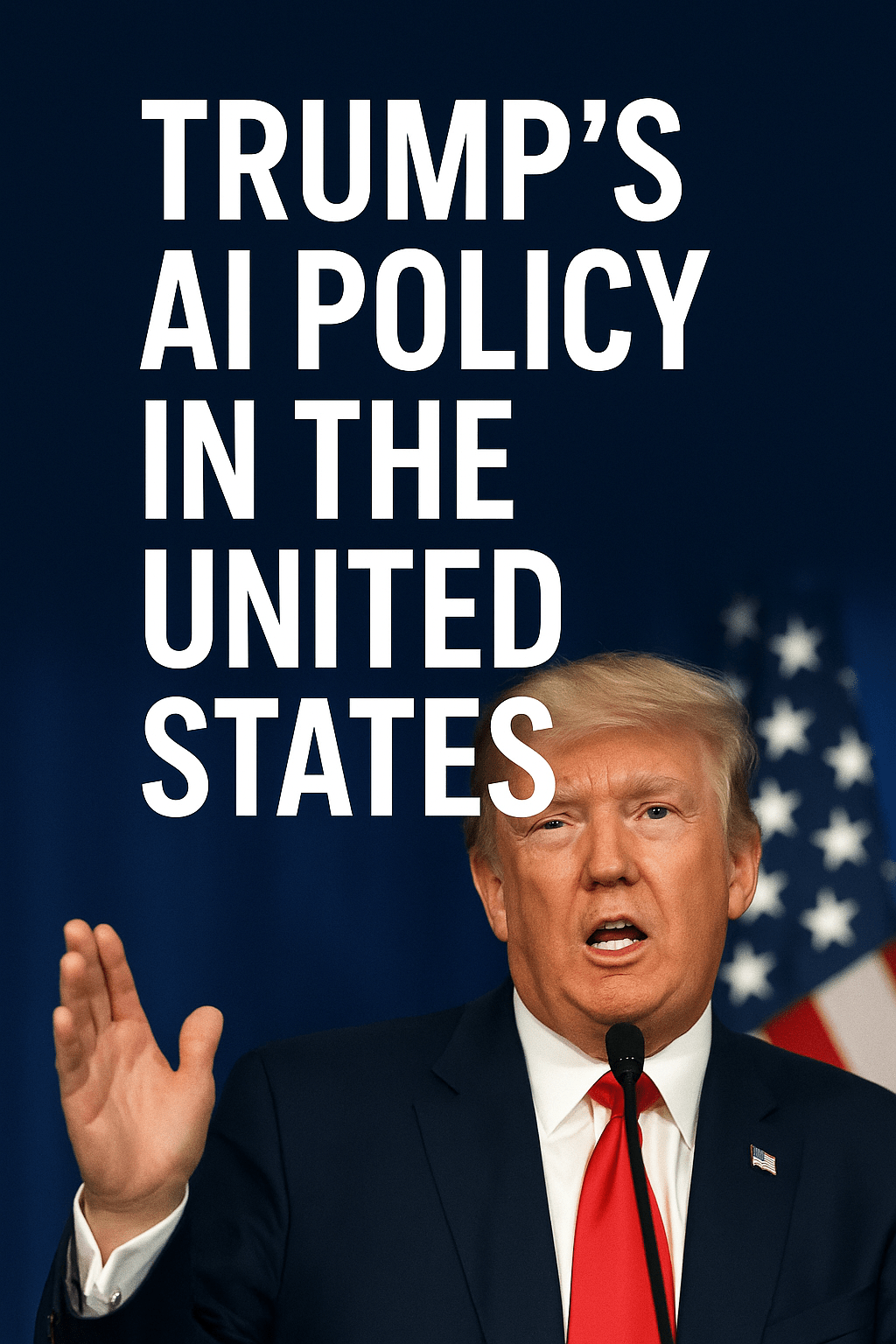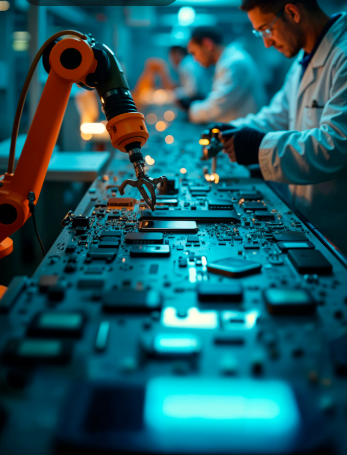
In a dramatic return to the global tech stage, former President Donald J. Trump has announced a sweeping AI initiative titled the “America’s AI Action Plan.” With a strong emphasis on deregulation, infrastructure investment, and global tech diplomacy, this move sets the tone for what Trump calls “a new era of American dominance in artificial intelligence.”
The announcement was made during a two-day press event in Washington and was accompanied by three major executive orders. Together, these steps mark a pivotal shift in Trump’s AI policy in the United States, a strategy designed to reclaim leadership from global competitors and fast-track domestic AI innovation.
Removing Roadblocks to AI Growth
At the heart of the action plan is a commitment to eliminating barriers that Trump argues are suffocating innovation. Federal agencies have been instructed to audit and repeal existing AI-related regulations that are deemed “ideologically driven or anti-growth.” This includes removing compliance requirements that address misinformation, climate change, and diversity metrics language that will be stripped from federal frameworks, including the AI Risk Management Framework published by the National Institute of Standards and Technology (NIST).
“We’re clearing out the red tape and putting America first in AI,” Trump said during his address. “No more woke algorithms, no more socialist-style compliance.”
This aggressive deregulation effort aligns closely with the new AI regulation USA 2025 landscape one that shifts from risk-aversion to market-driven innovation. Analysts note this signals a reversal of the Biden administration’s more cautious and equity-focused AI governance approach.
Executive Orders Signal Aggressive Policy Shift

Trump backed his plan with three executive orders on AI, each with targeted objectives:
- Mandating Ideological Neutrality: Federal AI systems must be “objective and free of political or social bias.”
- Accelerating Infrastructure Permitting: Fast-tracking approvals for AI data centers and related energy infrastructure.
- Promoting U.S. AI Tech Abroad: Supporting domestic companies in international markets while tightening restrictions on exports to rival nations.
The executive order on AI implementation is already underway, with several departments, including Commerce, Energy, and Labor, given urgent deadlines to begin execution.
Building the Backbone: U.S. AI Infrastructure
Another pillar of Trump’s AI policy in the United States is a robust push to build national AI infrastructure. The plan includes a major expansion of data centers, AI testing facilities, and high-speed digital networks. More notably, the administration is removing environmental restrictions that previously delayed construction.
Private companies will be allowed, and in some cases encouraged, to build their own power plants particularly fossil fuel-based—to meet the soaring energy demands of large-scale AI systems. This has sparked both praise from energy and tech sectors and criticism from environmental advocates.
Federal funding to support this infrastructure boom will top $100 billion, directed through agencies like the Export–Import Bank and Department of Energy. These investments also support domestic semiconductor manufacturing, a key piece in ensuring AI development remains secure and independent of foreign supply chains.
The move positions U.S. AI infrastructure as a key driver in the race to global AI supremacy.
Securing America’s Position on the World Stage
Trump’s plan doesn’t stop at domestic reform. A core goal is to reestablish U.S. dominance globally by expanding American influence in allied nations while blocking adversaries from accessing advanced AI technologies.
Under the AI export control policy, the U.S. will impose tighter restrictions on exporting semiconductor chips, AI hardware, and foundational software models to countries deemed national security risks, especially China, Russia, and Iran. Simultaneously, the administration will assist friendly nations in acquiring American-made AI stacks, creating an alliance-based tech ecosystem.
“AI is the future of power—military, economic, and digital,” said a senior Commerce Department official. “This policy ensures that future is led by America.”
This global strategy is directly embedded in the broader federal AI strategy, which Trump’s team is now rewriting to reflect these new priorities.
Industry Cheers, Critics Sound Alarms
Major corporations and tech executives have praised the plan. Leaders from Nvidia, Amazon, Chevron, and Dell issued statements of support, calling the action plan “bold, visionary, and long overdue.” Many noted that deregulation and infrastructure expansion could unlock unprecedented levels of AI investment and job creation.
At the same time, the move has ignited fierce opposition from civil rights organizations, environmental groups, and consumer watchdogs. Critics argue that eliminating protections tied to fairness, misinformation, and sustainability puts profits ahead of public interest.
Labor unions also warned that without clear accountability, automation driven by AI could displace workers across multiple sectors.
Advocacy coalitions have begun promoting what they call a “People’s AI Policy”, focused on equity, transparency, and ethical use. They’re calling on Congress and state legislatures to push back against federal preemption and preserve state-level AI regulations.
High Stakes, Uncertain Future
Experts at the Council on Foreign Relations described the plan as a “high-stakes gamble.” If successful, Trump’s AI action plan could cement U.S. leadership in a field expected to drive trillions in global GDP. If mismanaged, however, it could lead to unchecked AI deployments, international conflict, and erosion of public trust.
For now, the focus turns to federal agencies like NIST, the Department of Commerce, and the Office of Management and Budget, which are tasked with translating this sweeping vision into measurable results.
As the political battle over AI intensifies, one thing is clear: Trump’s AI policy in the United States has reignited the race for global tech leadership and the outcome will shape not just the future of American innovation, but the digital world itself.







